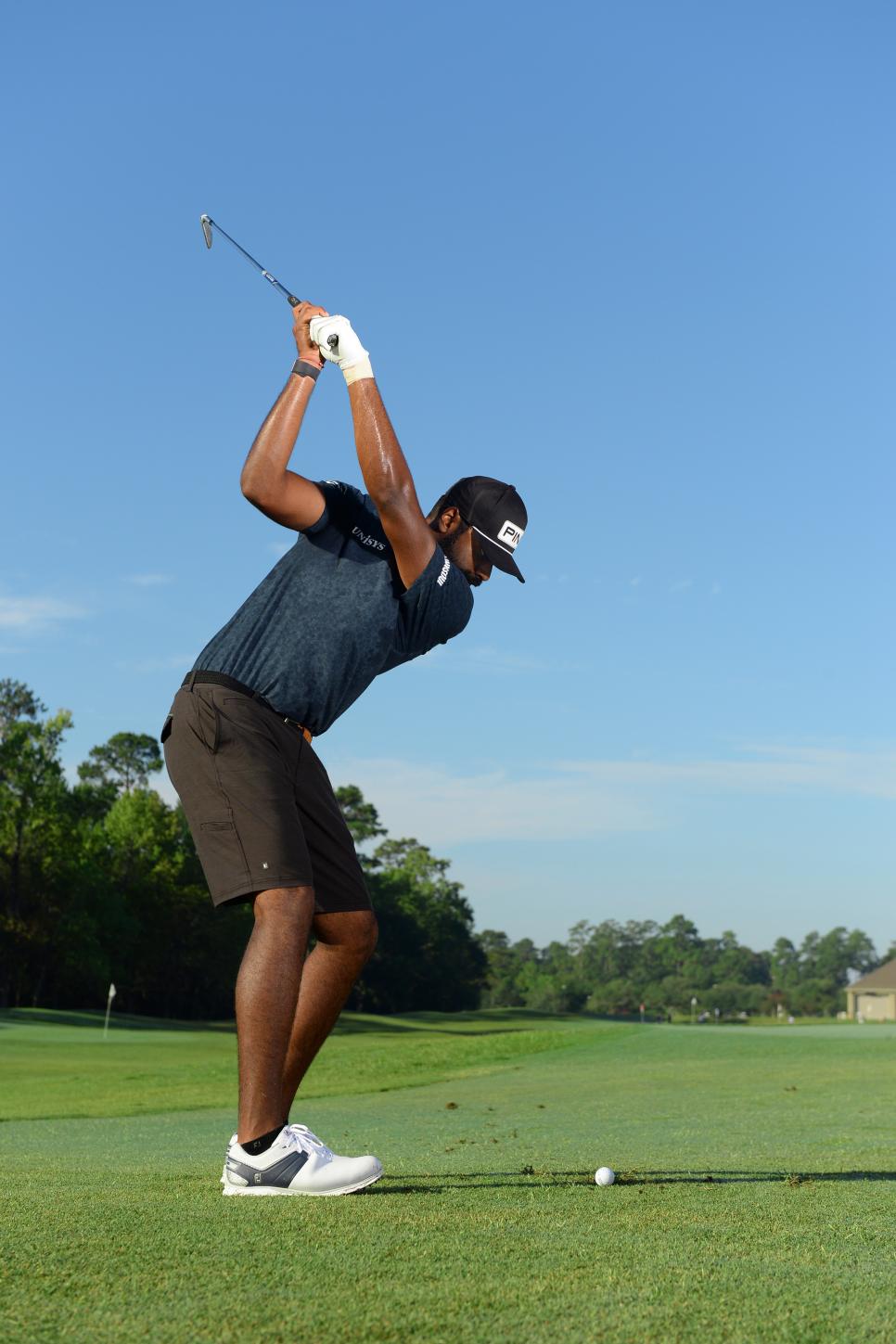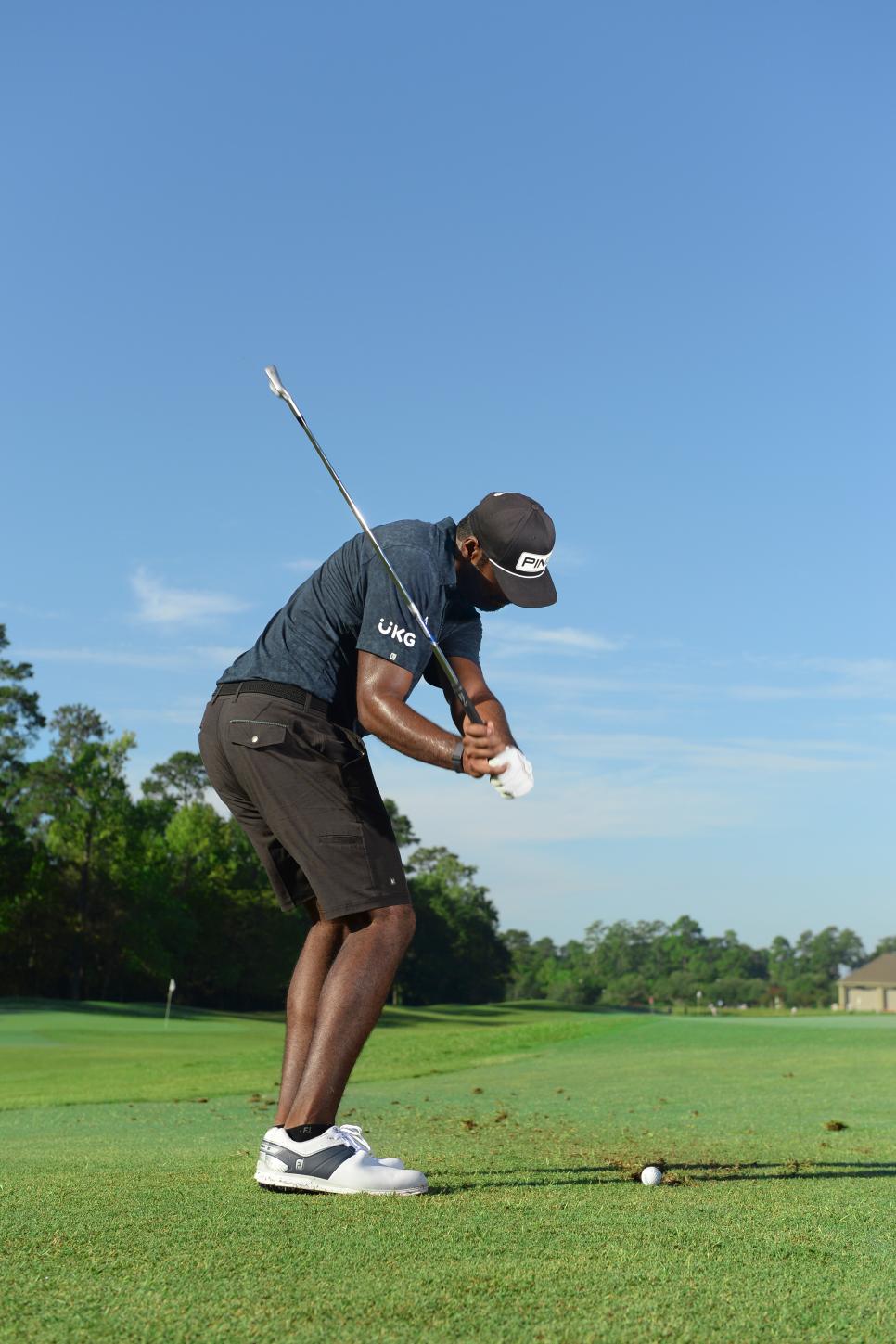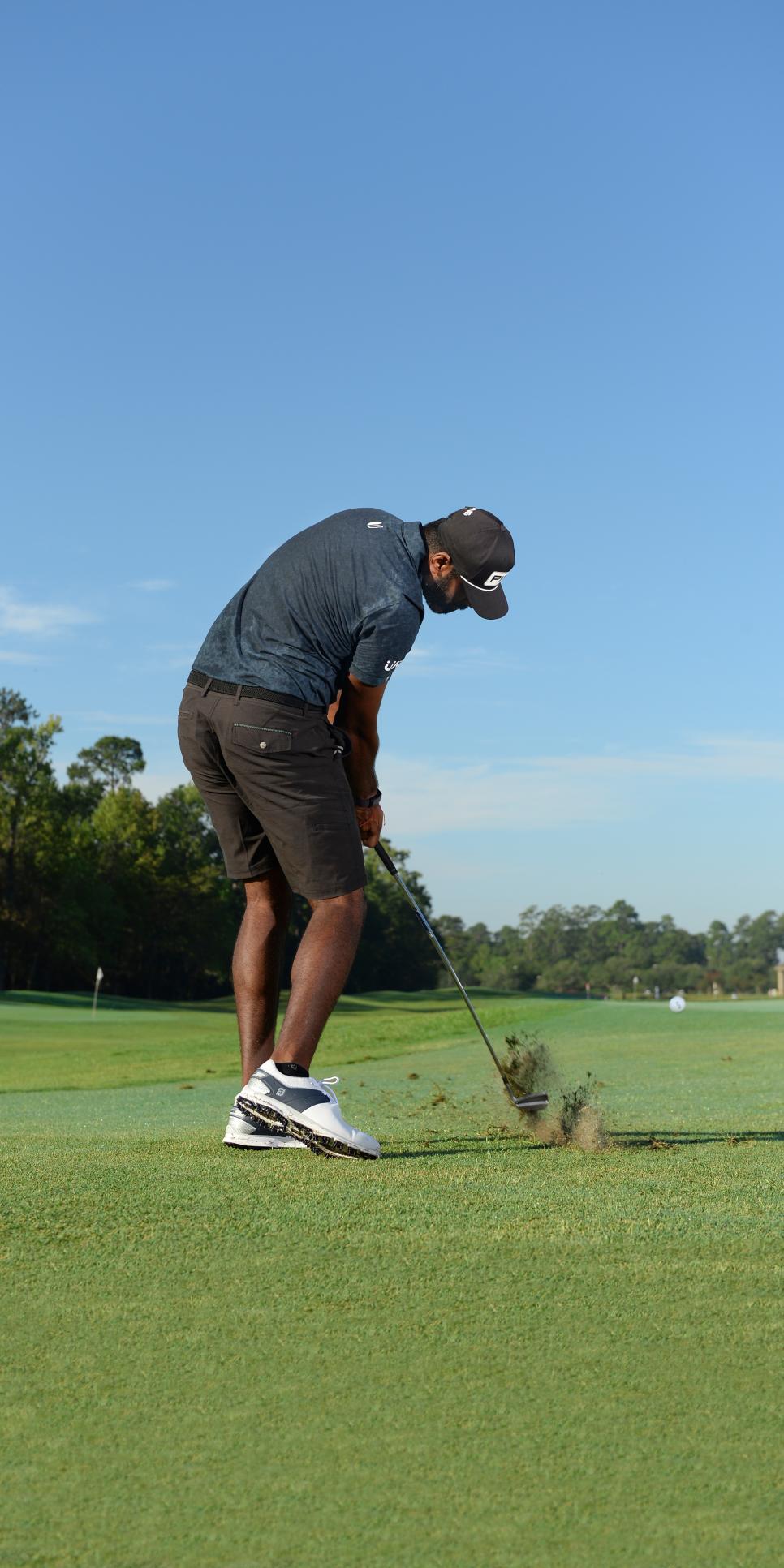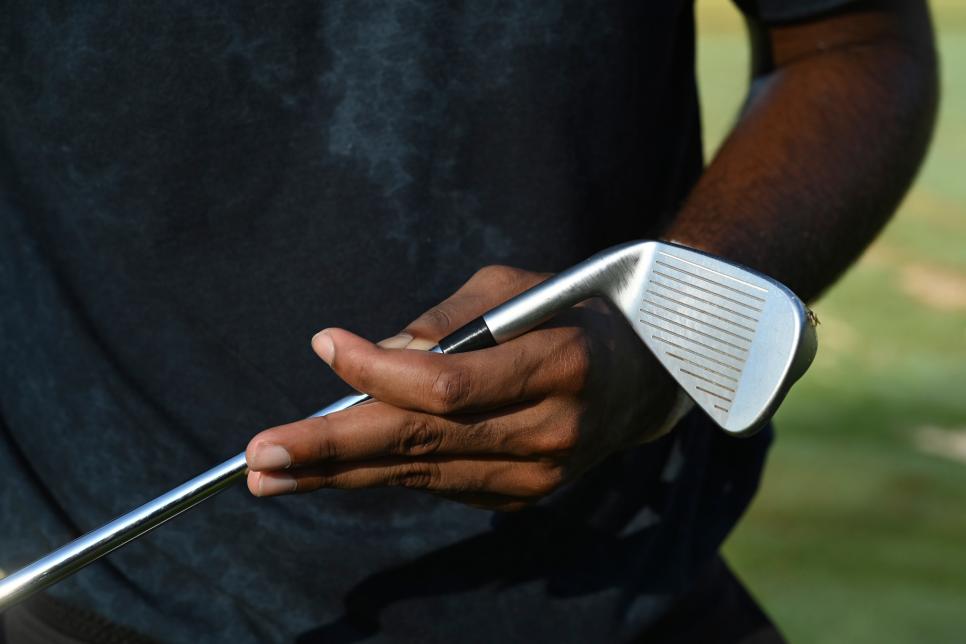Shotmaking
How to shank the ball on command like Sahith Theegala

SAHITH THEEGALA finished 28th in the PGA Tour's FedExCup standings in 2021-22, his rookie season. He had five top-10 finishes and led the tour in birdies with 433. Photographs by J.D. Cuban
J.D. Cuban
THE DREADED SHANK: Just the sound of it sends shivers down any golfer’s spine. Why in the world would anyone want to hit the ball sideways? Well, I’ll tell you why.
Firing off a couple of dead shanks is my specialty. I’ve been doing it ever since high school. Though unintentional at first, it soon became a way to draw a few laughs and loosen up my team and me before a big match. For example, back in 2015, I was playing in my second-ever college tournament for Pepperdine. It was early before a long 36-hole day, and a number of guys from each squad were warming up on the range, including players from Arizona State and the host school, Cal Berkeley. You couldn’t have drawn up a more perfect scenario for a sizzling hosel rocket. The range was shaped like a semicircle, and each team only had one stall. Pepperdine’s designated spot was on the very left edge of the range. Everyone was watching.
The shot ricocheted off my club almost 90 degrees to the right, whizzing past everyone, including ASU star Jon Rahm, who was hitting two spots down. Jon looked up at me like, “What the heck is this guy doing here?” I pretended to hang my head in disbelief.
Because I’m so adept at hitting shanks, I’m going to teach you everything you need to know to hit one of these mortifying shots. Really, I am, because how else are you going to learn how not to hit a repeat shank on the course if you don’t understand what causes one in the first place? Read at your own risk. —With Gabrielle Herzig
1. EXPOSE THE HOSEL TO THE BALL

J.D. Cuban
The first step in any pre-shot routine is visualization. For a shank, I imagine the ball exiting 45 degrees to the right of my target line. That’s where my focus is. As for the setup, I’ll stand a little closer to the ball than normal (above), which is what really helps produce the shank. I’ll also press my hands forward, which opens the clubface and exposes more of the hosel to the ball. On the takeaway, ditch any notion you have of making an on-plane swing, and take the clubhead back outside your target line and slightly away from your body on a more vertical plane.
2. HOLD YOUR HANDS HIGH

J.D. Cuban
You’ll see the byproduct of standing closer to the ball at the top of my backswing. My arm plane is much steeper than it would be were I standing my normal distance from the ball, and my hands are higher, too (above). I also feel more open with my body at the top. From this position, it’s much easier to start down over the top and swing across the target line, which increases the chances of the hosel being first to contact the ball. This steep, high-hands position, combined with a quicker-than-normal transition—something most amateurs have—is what often leads to the shank.
3. DRAG THE HANDLE DOWN

J.D. Cuban
Swinging left produces a better shank than any sort of inside move can. From the top, I feel as if I’m dragging the handle of the club down as fast as I can into the ball (above). My hands “beat” my body and the clubface to the ball. When the face does arrive at the ball, it’s wide open and is angled in such a way that the sweet spot of the hosel is the first to make contact. In general, dismiss everything you learned about swinging easy from the top and syncing up your hands, arms and body on the downswing. And forget about swinging from the inside. Pull down hard on the handle and swing left.
4. SWING ACROSS YOUR BODY

J.D. Cuban
When it comes to impact, the terrible moves you’ve made up until this point will all but ensure that you shank the ball. All you have to do is continue to lead with the handle and the hosel, and swing across your body from right to left. Note how open my body is to the target and how little room there is between my hands, arms and torso (above). That’s a classic out-to-in downswing path. Don’t release the club; keep dragging those hands forward and left as long as you can. When you finally make contact, the ball will ricochet off the face and careen to the right, just as you were visualizing at the start.
HOW NOT TO SHANK

J.D. Cuban
Once you know how to shank, you should have a pretty good idea of what to do to avoid one. Just in case you’re still a little lost, my advice is to stand a few inches farther away from the ball. This gives you a better chance of center-face contact. For a long-term fix, I recommend setting the heel down opposite the ball. This will train you to make contact in the sweet spot. Once you can do that consistently, you’ll forget you ever shanked one.




